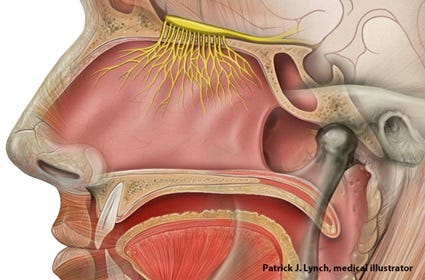Smell Test as dementia screen and diagnosis, now in clinical practice
PREMIUM CONTENT subscriber access
My past newsletter reported findings from routine eye exams related to dementia pathology:
Keep an eye on ophthalmology. Some major recent discoveries
“…brain's waste disposal system, the glymphatics; it clears out toxic amyloid beta proteins that have been associated with the development of Alzheimer's disease. …. researchers report using retinal scans to see these deposits in early stages of the pathology. To see how it disposes this waste, lab mice were injected in their eyes with fluorescently labelled amyloid beta proteins, which were then traced, showing shuttling through the optic nerve. Hours later, fluorescent proteins were found carried all the way into neck lymph nodes.”
And an observational longitudinal cohort study of 1202 older adults saw that worsing visual acuity and stereo acuity was associated with greater declines in language and memory domain scores. If contrast sensitivity too, worsened, it was also associated with declines in attention, and visuospatial ability domain scores.
However, findings that utilized another sensory system, olfaction, also show promise in everyday clinical practice for use in routine dementia screenings.

Keep reading with a 7-day free trial
Subscribe to BioMedWorks’ Newsletter to keep reading this post and get 7 days of free access to the full post archives.



